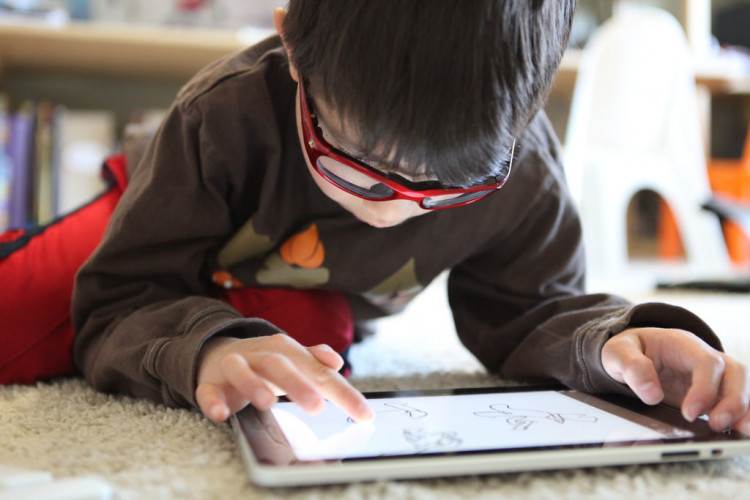A Hong Kong survey revealed that more than half of schoolchildren in the city spend over two hours on electronic devices daily, and up to eight hours glued to screens in most extreme cases.
The poll, conducted by the Democratic Alliance for the Betterment and Progress of Hong Kong (DAB), also revealed that more than 40 percent of pupils are wearing eyeglasses, while one in five parents do not set time limit to their kids spent on gadgets. Overall, 1,027 parents with kids aged three to 12 were involved in the survey.
Ben Chan Han-pan, a DAB lawmaker, said that about 46.8 percent of children in the study developed eye problems at the age of four and six, which indicates eye defects could start earlier than previously believed. The finding raises concern, particularly about the importance of eye health among parents, the South China Morning Post reported.
About 31.4 percent of the surveyed parents said their kids used electronic devices such as computers, smartphones, or tablets for more than two hours every day, while in extreme cases, 6.1 percent said their kids stared at screens six hours per day, and 2 percent said the duration was eight hours.
The survey also found that about 49.6 percent of parents limit their children's usage of electronic devices at two hours a day, 24.2 percent set four hours limit, and some 20 percent do not set such time limit. Chan said he's concerned that 20 percent of parents don't limit their children on gadgets and it only implies that some parents aren't aware of the importance of eye health.
The results reflect a worrying trend of increasing eye problems among children in Hong Kong, as a similar Chinese University survey conducted last year revealed that about 40 percent of polled children had developed myopia at the age of eight.
According to Chan, these proportions surpassed the levels set by the World Health Organization (WHO) in 2016, suggesting that 2.8 percent (170 million) and 27 percent (1.9 billion) of the world's population have were affected by high myopia and myopia respectively back in 2010.
The latest survey was done through face-to-face interviews citywide starting August until December of last year. Among the surveyed kids, 38.4 percent had astigmatism, about 75 percent had myopia, and the rest had weak vision or farsightedness.
Chan urged the government to immediately formulate control measures and prevention to tackle myopia among children, such as setting up a school allowance for eye tests to children or to buy eyeglasses.
Meanwhile, a four-year comprehensive study conducted by the University of Hong Kong also found that children in the city are spending more time in front of screens than their peers in the United States and the mainland China. The finding suggested that Hong Kong children are at risk of physical and mental health problems as they get older.






